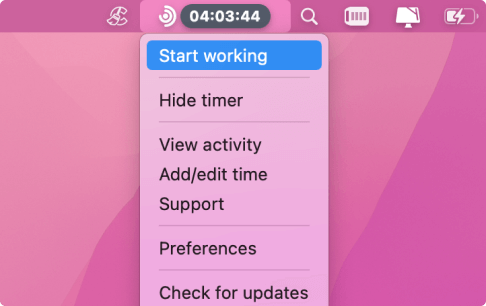What Is the 1-3-5 Rule?
The 1-3-5 rule is a productivity technique designed to help individuals prioritize tasks and manage their time more effectively. This method involves selecting one major task, three medium-priority tasks, and five minor tasks to accomplish each day. By breaking down tasks in this structured way, the 1-3-5 rule ensures that you stay focused on what truly matters, preventing overwhelm and boosting productivity.
The 1-3-5 method is particularly useful for those who struggle with task management and need a clear, actionable plan to follow. Embracing this rule can lead to a more organized and efficient workflow, ultimately helping you achieve your goals with greater ease and satisfaction.
The 1-3-5 structure involves handling nine different responsibilities each day. These assignments are divided into:
| 1 | 3 | 5 |
| Major task | Medium tasks | Minor tasks |
The name of the principle also reflects its order. Ideally, you’re expected to handle the major project, then move on to the medium and small activities.
Covering small, major, and medium tasks makes your day a more rounded success. That’s because you can go through everyday tasks and still make progress on project deliverables.
Who Created the 1-3-5 Rule?
The rule was made popular by the New York Stock Exchange’s executive vice chairperson, Betty Liu. She believed that narrowing her tasks to 9 jobs a day made it easier to get things done.
Benefits of the 1-3-5 Rule
One of the biggest benefits of using the 1 3 5 method is that it can work for anyone and any schedule, particularly freelancers and remote workers. Setting your mind on accomplishing 9 assignments each day gives you a defined sense of purpose that guides how you work.
The technique helps you understand the importance of identifying major, minor, and small tasks.
But there are other advantages of using the hack. Let’s go through them.
Sets up the right work balance
Your to-do list may be populated with minor and non-important activities, making your day look like a mess. Using the 1-3-5 rule means you can identify these tasks for what they are and handle them accordingly.
Since you have to handle a major project first, your priority will be identifying such tasks on your to-do list. That way, you’re maintaining the right balance between important and small activites.
Boost speed and efficiency
Multitasking is never good for productivity, no matter how you tweak it. If you want to get through tasks fast and without making errors, you have to focus on one thing at a time. The 1-3-5 rule promotes the concept of single-tasking. Even though you have to identify 3 medium and 5 small tasks, you can create a schedule to work on one at a time. That way, you’ll finish tasks faster without making costly errors.
Helps to get through more work
Without the 1-3-5 rule, you may set out to handle more than 10 activities a day. However, you’ll almost always finish the day with fewer assignments in the bag due to the many interruptions.
Also, without a defined structure, the balance between small and important assignments may be skewed. You may end up completing more irrelevant activities, making your day less successful. With the 1-3-5 method, you’re always working on activities that matter, regardless of their number.
But the 1-3-5 rule is not just a project prioritization hack. It’s also an effective time-saving technique. On good days, you can get through the 9 activities with more time to spare. As a result, you can get more done.
Reduces time-wasting
The work method allows you to focus on projects that are critical to your project, helping you weed out time-wasting activities from your schedule.
Since the rule gives you a defined work structure, you can work with precision. It also means interruptions and distractions won’t prevent you from getting things done.
Provides enough breaks
Breaks are important because they allow you to relieve stress and increase focus when you return to work. On the other hand, working for hours non-stop can reduce concentration, lead to errors, and cause health decline.
The 1-3-5 rule gives you a good structure that helps you take adequate breaks. Since you’re doing 9 different activities, you can easily incorporate breaks between each activity.
How to Implement the 1-3-5 Rule
Applying the rule isn’t difficult. It involves listing out your projects, identifying your work priorities, and managing your time efficiently.
Let’s show you the process.
List all your tasks
Listing all your projects allows you to see everything you’re setting out to do at a glance. It also makes it easier to identify and group your assignments and activities according to importance.
To make it work, you must draw up a comprehensive list that includes everything, from meetings to emails. You should pay attention to even minor projects or engagements. You can call this list your master to-do list.
It is recommended that you take stock of all your activities for the week. But you don’t have to limit yourself to the week. Any activity that comes to your mind should make it to the list, regardless of its deadline.
Just make sure you’re pouring out all the activities you can remember. You can stack them under their related dates.
Whenever a new projecy comes up, you can plug it into your schedule. This method allows you to clear your head, freeing you from the extra mental stress of always remembering your to-do.
After all, it’s always easy to refer to your list whenever you want to check your next assignment.
Group tasks according to size and importance
Once you’ve drawn up your “master” to-do list, start categorizing your activities according to similarity. For example, you can differentiate meetings from project briefs and project-specific tasks like article writing or video editing.
But first, make sure you’ve placed your activities under the right dates.
After that, identify important and urgent assignments and group them together. This way, you’re beginning to prioritize your activities.
Prioritize tasks
Task prioritization is central to the concept of the 1-3-5 rule. You must group tasks according to importance and urgency to identify the small, medium, and major assignments. There are different ways to identify projects that should top your priority list.
First, you have to look at jobs and appointments for each day. After that, identify the most important and time-sensitive ones.
There are different project prioritization techniques that you can use. However, one that we recommend is the Eisenhower Matrix.
The Eisenhower Matrix
The Eisenhower Matrix helps you to avoid taking every urgent assignment more seriously than others. In reality, there are time-sensitive tasks that you don’t necessarily have to pick over other important assignments. That’s because the technique ensures you identify what to reschedule and delegate.
The concept works by separating activities into four quadrants. The quadrants define important and urgent tasks and how you should handle them:
- Important and Urgent
- Important and Not Urgent
- Not Important and Urgent
- Not Important and Not Urgent
Start time blocking
Time blocking involves dividing your day into different blocks of time. This time management technique is perfect for the 1-3-5 rule.
You dedicate each time block to accomplishing a specific activity or group of activities. After taking stock of your assignements and identifying major, medium, and small assignments, you can create time blocks for each.
Sometimes, you can create time blocks to accommodate more than one task, depending on size.
Helpful Tips on Using the 1-3-5 Rule
Use a to-do list application
A to-do list software application helps you list, organize, prioritize, and track your activities.
Most of these apps are complete productivity tools that help you stay on top of work and never miss anything. They’re integrated with other tools, from calendars to file-sharing platforms such as Google Drive.
Choosing the right to-do list app means you can boost your productivity and take full advantage of the 1-3-5 rule.
Now, the right tool for you depends on how you operate. You have to consider different factors, from the nature of your work to your budget.
There are to-do list applications that fit teams and individuals. Others integrate different time management and project prioritization techniques.
Use a time tracking app
Traqq time tracker is another important tool to make an ally. This app primarily tracks billable hours to ensure you create accurate timesheets and bill clients correctly.

It also assists in identifying and removing time-wasting activities as it records how long an employee spent on each program and website.

For employers, time trackers are valuable employee monitoring tools that ensure error-free payrolls. It also helps managers to keep tabs on remote workers.
That said, time-tracking can help you implement a flawless 1-3-5 routine. You can use a time tracker to understand and optimize the schedule.

It’s a valuable time-blocking tool because you can use it to determine how much time to allocate to an activity or group of activities.
Use Time Management Techniques to Stay Focused
You have to apply a great deal of time management to accomplish the tasks in your 1-3-5 model. Thankfully, there are different time management techniques that work with the schedule.
- The Pomodoro Technique
- Time Mapping
- The Pareto Principle
Final Thoughts
Today’s workplace continues to expand with more work and activities. From handling multiple meetings and consulting with colleagues to responding to emails and working on projects, there’s a lot to overwhelm the average professional.
Thankfully, the 1-3-5 rule helps to put things into perspective. You can now create a more productive workday and reduce stress while you’re at it.

